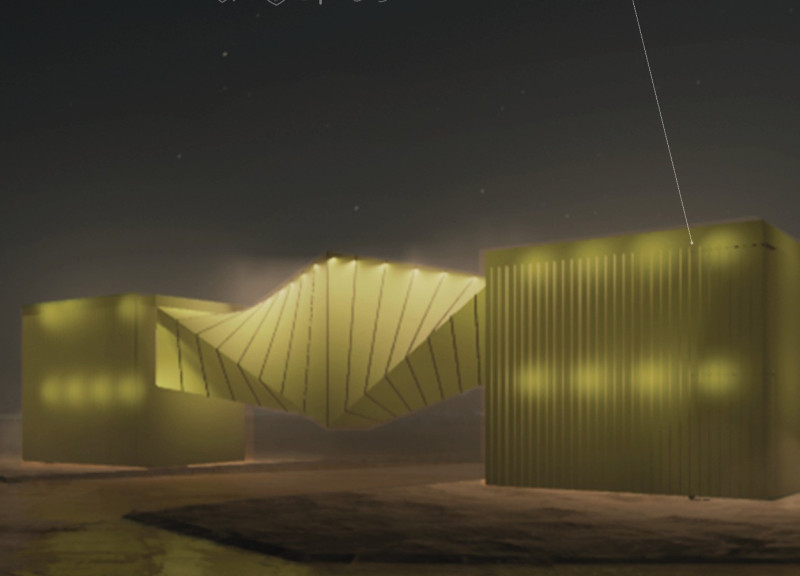5 key facts about this project
The Pavilion of Humanity is an architectural project designed to serve as a cultural and educational hub, emphasizing the historical progression of human innovation. Conceived as an interactive space, it facilitates engagement with the past while fostering community connections. The design is characterized by its fluid, wave-like structure that reflects the complex and interconnected nature of human development.
The pavilion's spatial organization includes distinct areas such as a Workshop, Exhibition Space, Café, Conference Room, and Reception Area, all linked by a flexible Connector space. This arrangement enhances the visitor experience by promoting circulation and interaction. Adjacent to the pavilion is an Outdoor Performance Area, designed to host events that encourage community involvement and cultural exchange.
The architectural design showcases a commitment to sustainability through the selection of materials and a focus on natural light and ventilation. Possible materials may include glass for transparency and accessibility, sustainable materials to reduce environmental impact, a metal framework for structural integrity, and wood to create warmth within interior spaces. These choices underscore the pavilion's goal to blend modern construction practices with a respect for the environment.
Unique Design Approaches and Functionality
The Pavilion of Humanity distinguishes itself from typical cultural spaces through its emphasis on interactivity and multifunctionality. Rather than functioning solely as a static exhibition venue, this design fosters a dynamic visitor experience by encouraging participation and dialogue. The integration of a historical timeline within the space serves not only as an educational tool but also as a narrative element that invites users to reflect on human progress.
The pavilion is intended to support a diverse range of activities, including workshops, exhibitions, and performances. This adaptability creates opportunities for various organizations and community groups to utilize the space, aligning with the project's mission to promote cultural engagement.
Architectural Integrity and Visitor Experience
The architectural integrity of the Pavilion of Humanity is reflected in its form and organization. The undulating design not only enhances aesthetic appeal but also encourages movement and exploration within the space. The careful consideration of natural light enhances the pavilion's atmosphere, improving the overall visitor experience and highlighting the interplay between indoor and outdoor environments.
The project's thoughtful approach to materials, spatial organization, and interaction positions it as a valuable addition to any community looking to foster cultural understanding and historical appreciation.
For a deeper understanding of the Pavilion of Humanity and its architectural strategies, readers are encouraged to explore further elements such as architectural plans, architectural sections, and architectural designs presented within the project documentation.























